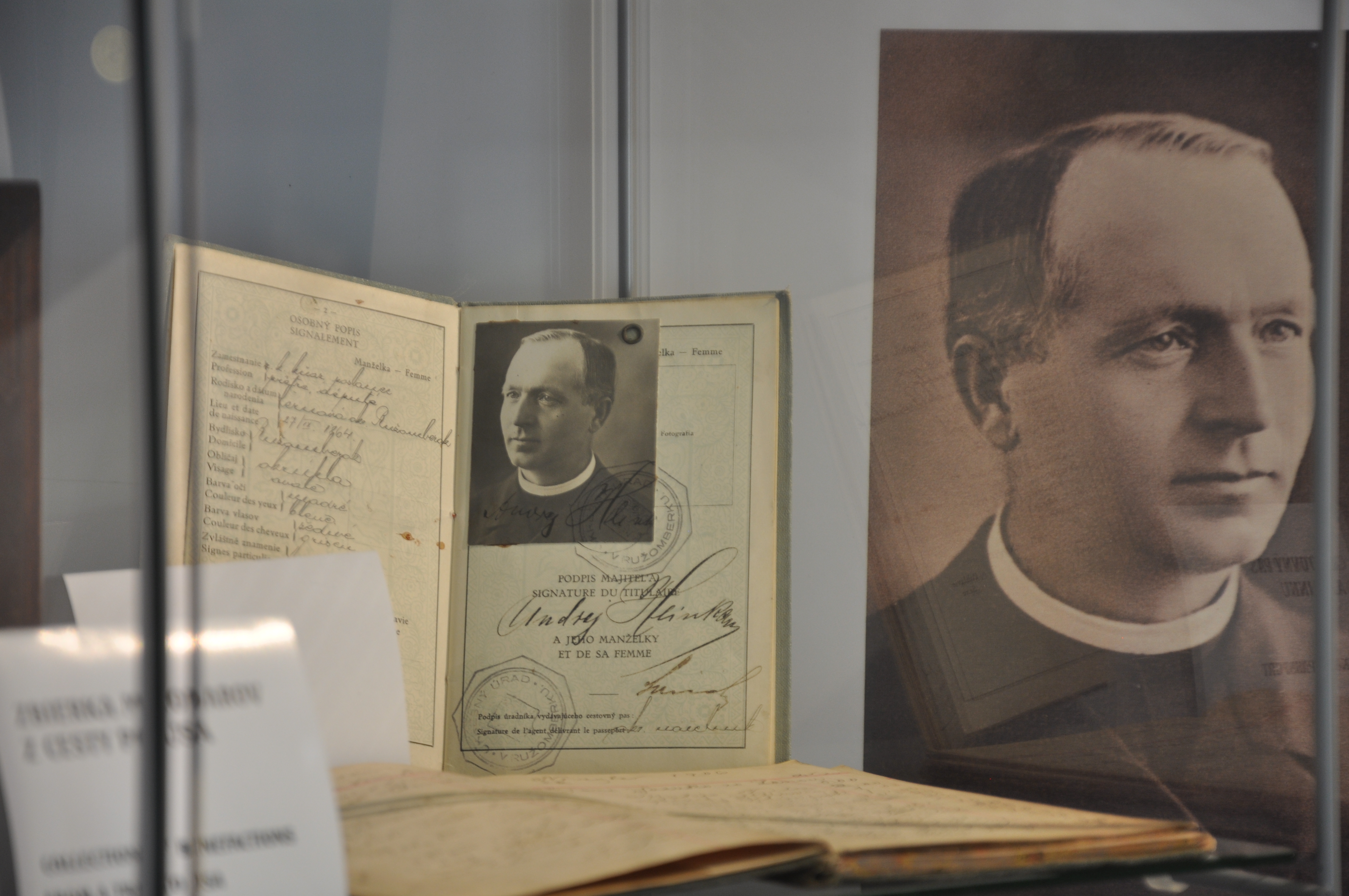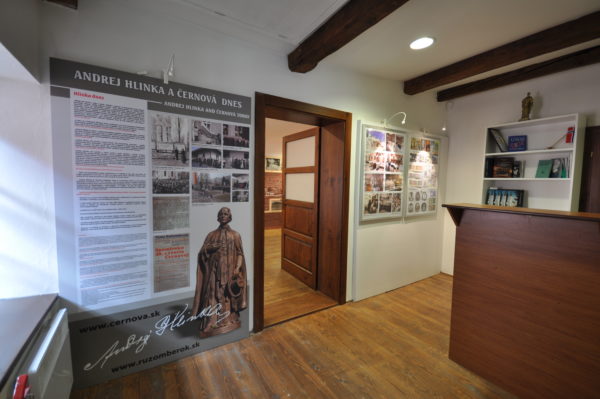Andrej Hlinka was a nationalist, politician, publicist and translator. He and his eight siblings came from a raftsman family . He got his basic education in his native village of Černová. He then studied at the Piarist school in Ružomberok, where he decided to become a priest. In the years 1881 – 1883 he studied at the higher grammar school in Levoča. In 1883 he was accepted as a seminary cleric in the Spiš Chapter. He received the ordination of the priesthood on June 19, 1889.
He died of a serious illness, his remains were first placed in the Ružomberok cemetery and on October 31, 1938, ceremoniously transferred to the mausoleum at the Ružomberok parish church. Before the arrival of the Red Army in March 1945, they took them to an unknown place in Slovakia.
Andrej Hlinka’s Mausoleum
The name Andrej Hlinka is associated with the existence of an important monument in the town of Ružomberok, which is represented by his mausoleum – a national cultural monument of the Slovak Republic.
The original idea of construction in 1938 was a memorial to the fallen of World War I. After the death of Andrej Hlinka, the then municipal council under the leadership of Anton Mederly, the mayor of Ružomberok, accepted a proposal to build the Mausoleum of Andrej Hlinka.
The building is oriented so that it is part of the main square with the church of St. Ondrej and the adjacent parish, in which Andrej Hlinka worked. The interior of the mausoleum was originally divided into two parts, which, however, optically intertwined and created the impression of continuity. The first part was the entrance chapel with the altar of the Virgin Mary and the coat of arms of the city. To the left was a sarcophagus made of black onyx stone, above which stood a Slovak emblem with an inscription. The area of the outer front wall of the mausoleum was filled with memorial plaques – the first with a carved law on the merits of Andrej Hlinka from April 1939 and the second with the list of the fallen man from Ružomberoks in the First World War. On October 31, the ceremonial transfer of Hlinka’s body remains from the town cemetery to the mausoleum took place.
In 1945, Andrej Hlinka’s body was transported to a safe place. Not enough reliable information has been preserved about his fate in the post-war period during the socialist era. Although various rumours and legends have circulated about him, the search for the remains of the body has not yet yielded any positive results.
At present, in the inner part of the mausoleum there is the original glass coffin of Andrej Hlinka with a noticeable trace of the shot, which probably comes from the time of her temporary stay in the crypt of the Cathedral of St. Martin in Bratislava. The last modifications of the face were made in 2007 before the commemorative event for the centenary of the tragedy in Černová. A new information panel for tourists in several language versions was installed on the face of the building. The mausoleum is currently one of the most significant cultural and architectural landmarks of Ružomberok.
Church of St. Ondrej
Andrej Hlinka was elected parish priest of Ružomberok in 1905 and served his services there until his death.
City Hall
In the past, a Roman Catholic parish was located here, where Andrej Hlinka lived from 1905 until his death in 1938.
Other places connected with A. Hlinka
Gymnasium of St. Andrej – A. Hlinka significantly contributed financially to the construction of the building
The former Piarist grammar school, monastery, church – church and monastery became the property of the Jesuits in 1922, who was invited to Ružomberok by the Bishop of Spiš Ján Vojtaššák together with Andrej Hlinka
Orphanage – A. Hlinka donated funds for the construction of the building
Liptov Museum – there is a permanent exhibition of Andrej Hlinka
Andrej Hlinka Cultural House – funds from the collections of American Slovaks and proceeds from Andrej Hlinka’s property were used for the construction
Church of the Rosary of the Virgin Mary – church consecrated by A. Hlinka in 1910
Monument to the victims of the Chernivtsi tragedy – the monument was unveiled in 1932 with the participation of the general public, Andrej Hlinka and representatives of the Slovak League and the Matica slovenská
Birth house of A. Hlinka – a historical exposition from the life and work of A. Hlinka and the inhabitants of Černová is installed in the house
The place of shooting – the place of the Chernivtsi tragedy, where dissatisfied Chernivtsians gathered in 1907 for protesting against the ban on A. Hlinka’s participation in the consecrated church. Hungarian gendarmes shot 15 people.



Please describe your experience